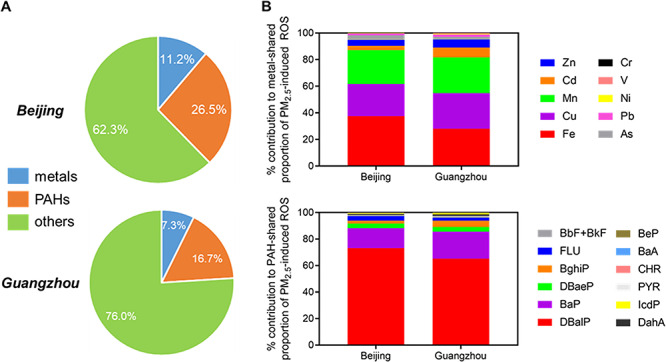Figure 1.

(A) Relative contribution of trace metals and PAHs to PM2.5-induced intracellular ROS in Beijing and Guangzhou and (B) individual chemical-resolved contributions to the metal- or PAH-shared ROS induction effects in Beijing and Guangzhou [38]. Data averaged from 14 and 11 samples for Beijing and Guangzhou, respectively. BaA, benzo(a)anthracene; BaP, benzo[a]pyrene; BbF, benzo[b]fluoranthene; BeP, benzo[e]pyrene; BghiP, benzo[g,h,i]perylene; BkF, benzo[k]fluoranthene; CHR, chrysene; DahA, dibenzene[a,h] anthracene; DBaeP, dibenzo[a,e]pyrene; DBalP, dibenzo[a,l]pyrene; FLU, fluoranthene; IcdP, indeno[1,2,3-cd]pyrene; PAH, polycyclic aromatic hydrocarbon; PYR, pyrene; ROS, reactive oxygen species. Reprinted with permission from (Jin L et al. Contributions of City-Specific Fine Particulate Matter (PM2.5) to Differential In Vitro Oxidative Stress and Toxicity Implications between Beijing and Guangzhou of China [38]. Environ Sci Technol 53(5):2881–2891. Copyright (2019) American Chemical Society
